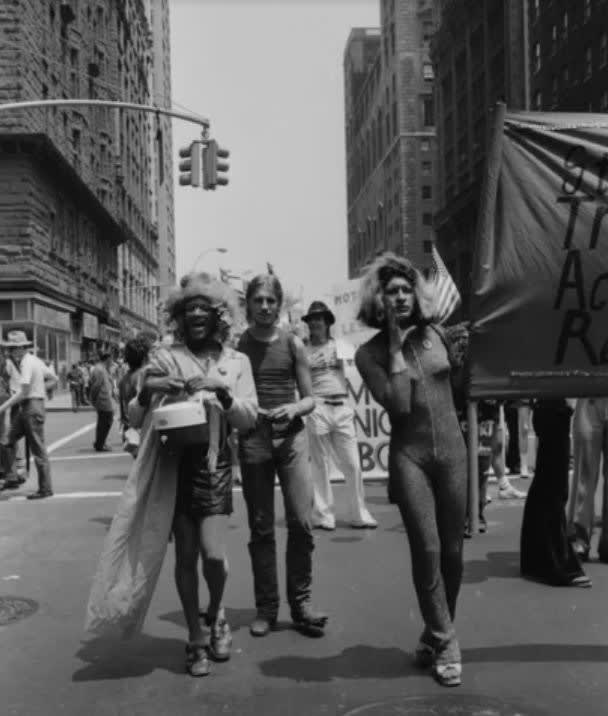
June is Pride Month: How to celebrate the LGBTQIA+ community
How will you be celebrating Pride Month?
Written by Jamie Epstein, Countable News
Pride Month is celebrated each June as a way for LGBTQIA+ communities and their allies to celebrate the freedom to be themselves and commemorate the ongoing fight for equal rights.
Join Causes as we celebrate the triumphs, and remember the struggles, of the LGBTQIA+ community.
LGBTQIA+
- LGBTQIA+ is an acronym meaning lesbian, gay, bisexual, transgender, queer, intersex, and asexual.
- This is an inclusive acronym used to describe a range of sexual orientations and gender identities.
- Queer is an umbrella term for non-straight people, and intersex refers to those whose bodies fall outside of the strict male/female legal sex categories.
- In this article, we use LGBTQIA+ to describe the entire queer community.
The beginning of Pride Month
- The first pride march was held in 1970 in New York City, one year after the Stonewall Riots.
- On June 28, 1969, police raided the Stonewall Inn, a gay bar in Greenwich Village. The protest continued over six days as LGBTQIA+ individuals demanded a safe establishment to exist and express themselves without fear of arrest.

- These riots marked the beginning of the LGBTQIA+ liberation movement in America. The 1970 Christopher Street Liberation March morphed into what is known today as the New York City Pride March and acted as a catalyst for celebrations across the world.
- Transgender women of color were on the frontlines of the LGBTQIA+ movement, including the "Mothers of Marginalized LGTBQ Youth," Marsha P. Johnson and Sylvia Rivera. The women were leaders of the Stonewall Riots; prominent AIDS activists; and founded STAR (Street Transvestite Action Revolutionaries), which provided services to homeless, transgender youth.

Photo by Leonard Fink, Courtesy LGBT Community Center National History Archive
History of LGBTQIA+ rights in America
- Throughout the 1950s and 1960s, the FBI and other law enforcement agencies kept lists of "known homosexuals," their friends, and their favorite bars. Police raids on gay establishments were not uncommon. “Homosexual acts” were illegal across the country, except for Illinois.
- In 1952, the American Psychiatric Association listed homosexuality as a mental disorder. It remained in the Diagnostic and Statistical Manual (DSM) until 1974.
Here, we take an (animated) look at the fight for LGBTQIA+ rights in the U.S.
- Bill Clinton was the first U.S. President to officially recognize Pride Month in 1999.
- In 2011, President Barack Obama labeled it “Lesbian, Gay, Bisexual, and Transgender Pride Month" in an effort to make it more inclusive to the entire community.
- In 2003, the Supreme Court effectively decriminalized LGBTQIA+ relations, and in 2009, Obama signed a new hate crime act into law, commonly known as the Matthew Shepard Act. Gay marriage was legalized by the Supreme Court in June 2015.
Pride celebrations
- On the last weekend in June, New York City throws one of the world’s largest pride celebrations. On June 26, LGBTQIA+ advocates, supporters, and allies will march down 5th Avenue into Greenwich Village, the site of Stonewall. Learn more about NYC’s pride events here.
- Provincetown, Massachusetts, has Pride Month celebrations from June 3 to 5. Known as P-town, 67% of visitors identify as LGBTQIA+, making it a hotspot for pride celebrations. Discover more about P-town’s pride celebrations here.
- Philadelphia is celebrating 50 years since its first pride celebration with a march on June 5: “PHL Pride 50: Our Community, Our Joy.” Learn more about Philadelphia pride here.
- Washington, D.C., is holding a march on June 11 to celebrate the historic victories of the LGBTQIA+ community. Check out the Capital Pride Alliance’s website to learn more.
How to be a better ally
Allies to the LGBTQIA+ community are frequently welcomed by advocacy leaders to celebrate the month. Pride is an event held by and for LGBTQIA+ people, so allies are encouraged to participate respectfully and responsibly.
- Learn about the history of Pride Month, how it came to be, and the struggles along the way.
- Be aware of the space designated for LGBTQIA+ people and the importance of having spaces solely for marginalized communities.
- Learn about and respect the varying identities within the LGBTQIA+ community.
- Understand the intersectionality that goes into celebrating Pride Month and maintain your allyship year-round.
How will you be honoring Pride Month?
(Video by Josh Herman & Jessy Brown)